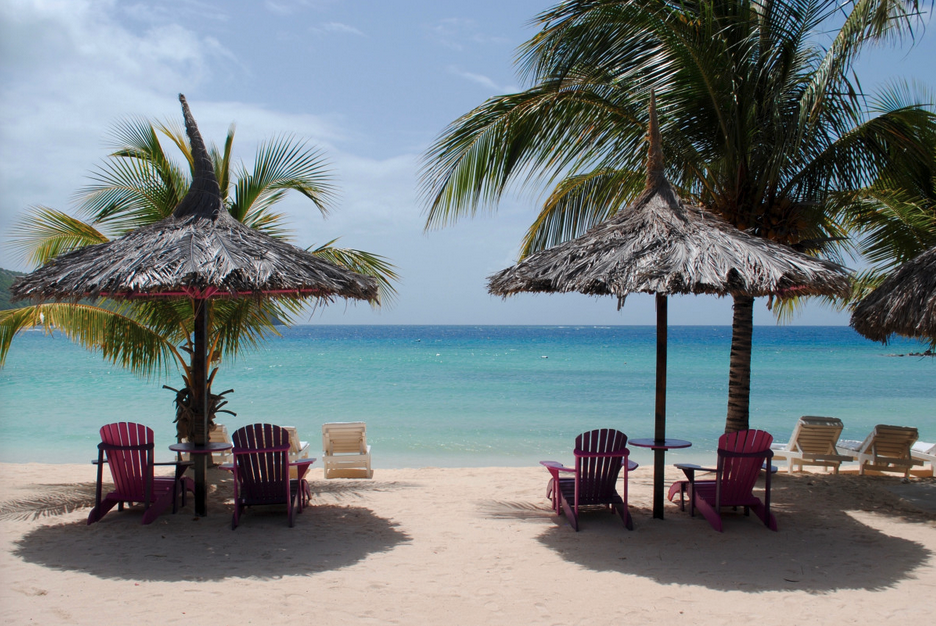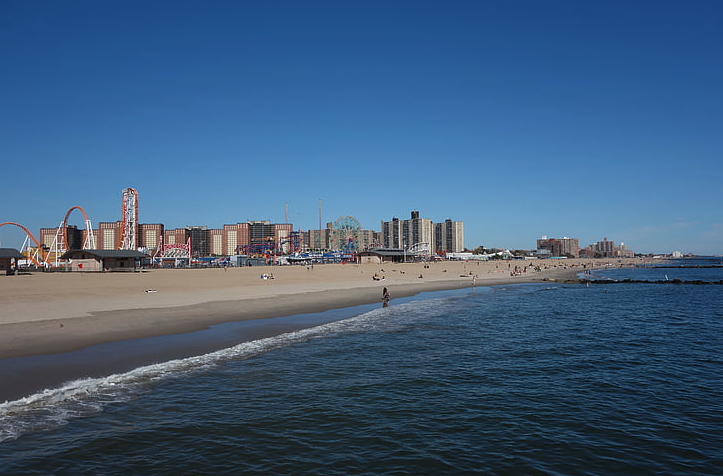We’ve all seen pictures of beaches in the Caribbean and similar tropical places. Beautiful white sand, with gorgeous water that’s varying colors of blue, green or a mixture of the two.
 And then you’ve got beaches that aren’t quite so picturesque. When I was very young, we lived in Brooklyn, NY. During the summertime, we spent our Sundays at Coney Island beach, with my maternal grandparents. The sand there was kind of tan, and the Atlantic Ocean was much darker – kind of a brownish, with some blue and green thrown in.
And then you’ve got beaches that aren’t quite so picturesque. When I was very young, we lived in Brooklyn, NY. During the summertime, we spent our Sundays at Coney Island beach, with my maternal grandparents. The sand there was kind of tan, and the Atlantic Ocean was much darker – kind of a brownish, with some blue and green thrown in.
 Ever wonder why ocean water in some places is so pretty and in other places, it’s so…not? There are several reasons why that happens. Some people think it has to do with pollution, but that’s really not it at all. Here’s why and how it happens.
Ever wonder why ocean water in some places is so pretty and in other places, it’s so…not? There are several reasons why that happens. Some people think it has to do with pollution, but that’s really not it at all. Here’s why and how it happens.
Light absorption
Think back to your days of learning about light absorption. Everything in the world has a particular color, and that pigment of color becomes visible because of light. An object can obtain its color based on the intensity of the light source (that’s why colors are brighter in a room lit by a 120-watt light bulb than they are in a room lit by a 4-watt nightlight bulb).
In most cases, when you’re outdoors, the sun illuminates its rays on everything you see, which, again, gives an object its color. But the sun isn’t entirely responsible for this. The objects that the sun hits also come into play. When light touches down on the surface of an object, specific wavelengths of light are absorbed and some of the wavelengths of light are reflected. For example, plants tend to absorb all the colors of the spectrum except green; that’s why most plants appear to have this color.
When it comes to water, according to NASA, absorption is strong in the red and weak in the blue. So red light is absorbed quickly in the ocean, leaving us to see the blue.
Plankton
The most important light-absorbing substance in the oceans is chlorophyll. Phytoplankton (microscopic marine algae) chlorophyll use to produce carbon via photosynthesis. Due to this green pigment (the chlorophyll), phytoplankton preferentially absorbs the red and blue portions of the light spectrum (for photosynthesis) and reflects the green light. So, the ocean over regions with high concentrations of phytoplankton (i.e. along coastlines and continental shelves, along the equator in the Pacific and Atlantic Oceans, and in high-latitude areas) will appear as certain shades, from blue-green to green, depending on the type and density of the phytoplankton population there.
Meanwhile, in other parts of the oceans…
While some parts of the world’s oceans look blue or green, others (such as the shores of the northeastern United States), look more brownish than blue. The reason for that is CDOM, which stands for Colored or Chromophoric Dissolved Organic Matter. They include:
- Single-cell organisms (algae, phytoplankton and plankton)
- Small crustaceans, eggs and larvae
- Dissolved organic carbon matter
- Sediments
- Chemical molecules from land runoff
These parts of the world’s oceans have more “stuff” in it…like a nutrient-rich soup. In areas where the water is rougher, sand is also added to the mix. If the sand is lighter/smaller particles, it stays suspended in the water for longer periods of time. How all these things absorb and reflect wavelengths makes the water appear brown.
And about deep water
Interestingly, when you’re talking about the deep ocean, miles and miles off shore, that water is completely dark. That’s because almost no light can penetrate depths beyond 656 feet.
Want to comment on this post? Great! Read this first to help ensure it gets approved.
Want to sponsor a post, write something for Your Mileage May Vary, or put ads on our site? Click here for more info.
Like this post? Please share it! We have plenty more just like it and would love it if you decided to hang around and sign up to get emailed notifications of when we post.
Whether you’ve read our articles before or this is the first time you’re stopping by, we’re really glad you’re here and hope you come back to visit again!
This post first appeared on Your Mileage May Vary
